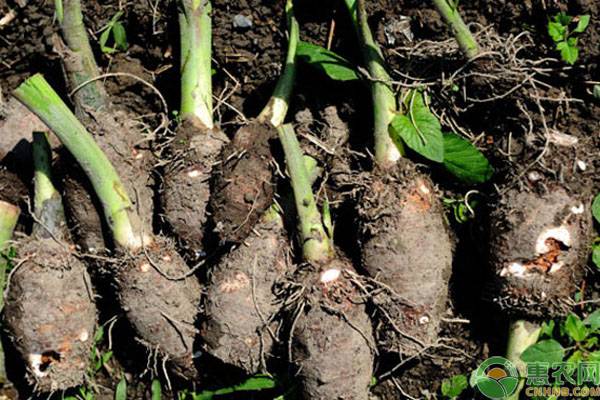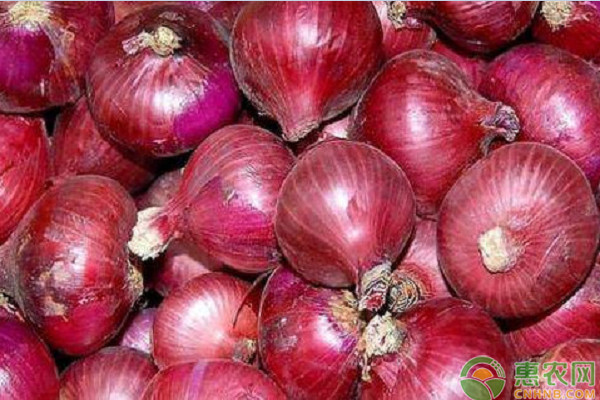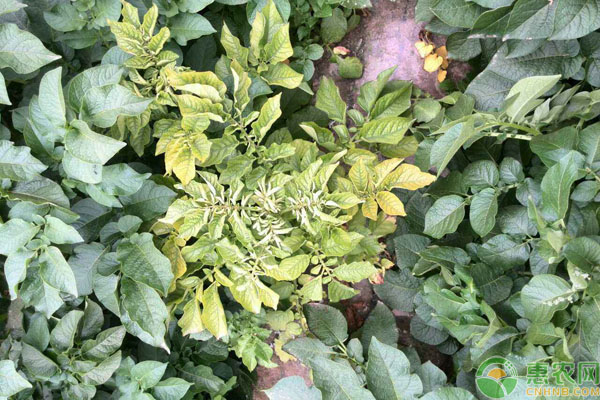Cultivation and management techniques of pollution-free and high-yield taro
Taro has a high nutritional content and a wide range of cultivation, which is also known as taro, taro, winter taro and so on. This chemical can not only improve the body's immunity, but also prevent some diseases. Taro originated in Indonesia and has just been planted on a large scale in China. It can be used not only as a vegetable and fruit, but also as a kind of grain. Therefore, it is very important to develop pollution-free planting management methods for increasing production of taro.

In order to ensure the yield and quality of taro planting, and to maintain pollution-free planting, strict manipulation must be carried out in the whole process of carrying out management methods, and it is best to increase the yield of taro at a large level.
1. Selection of planting plots
Taro belongs to perennial woody plants. The cultivation of this plant has higher regulations on soil. It likes to grow in loose, rich and permeable soil. Therefore, in order to maintain pollution-free planting and increase yield, high attention must be paid to the thickness, looseness and air permeability of the soil layer in the whole process of soil selection. Neutral and acidic soil is more suitable for its growth. In the selection of soil, the accumulation of organic waste gas, waste, sewage and other areas should be reduced as far as possible, in order to reduce the environmental pollution of taro.
two。 Ploughing and fertilizing
Ploughing is a key stage in the whole process of taro planting. Before taro planting, the land must be leveled, and the deep layer of the soil is about 30 cm. The purpose is to ensure that taro has a better natural environment for soil growth [2]. In addition, in the whole process of deep ploughing and fine cultivation, some organic fertilizers with sufficient retting fertilizer can be appropriately added, ditch fertilizer and fertilizer can be added in the whole process of planting, and the addition of ditch fertilizer can be carried out appropriately after planting in some areas. maintain good practical results.
3. Seed selection and planting
Seed selection is an important link and necessary condition to improve the yield and quality of taro. Some difficult problems must be paid attention to in the whole process of seed selection. In the whole process of white taro seed selection, great attention must be paid to the fact that the size of the cuttlefish should be symmetrical, and there is no disease and rot. After the selection of oysters, the situation of continuous cropping should be strictly prohibited, and high attention should be paid to rotation with other crops. in addition, the spacing of planting should be paid great attention to in the whole process of planting, and moderate irrigation should be carried out after planting.
4. Weeding and covering with sub-film
After the taro is planted, some weeds must be found in the soil, so the weeds must be treated properly and can be sprayed with chemical fertilizer, but the dosage must be controlled to prevent harm to the growth of taro. After weeding, sub-film mulching must also be carried out in order to show a suitable natural environment and degree for the growth of taro, and tamping should be carried out around the agricultural plastic film to prevent the wind agricultural plastic film from blowing and causing harm to taro.
5. Breaking the membrane to introduce seedlings, checking seedlings and replanting
10-15 days after taro planting, taro will show tooth sheath, so it is necessary to solve the problem of taro introduction. If the emergence rate can reach 80%, the seedlings must be replenished immediately. This stage is important to increase the yield of taro.
6. Cultivation techniques in the middle and later stage
Cultivation techniques are very important to the pollution-free cultivation of taro. After planting and introduction, cultivation techniques must be carried out. The harm of cultivation techniques includes the following aspects.
First, the fattening work is a critical stage, which must be guaranteed. Taro has high regulations on chemical fertilizer, and nitrogen, phosphorus and potassium fertilizers must be applied during the planting period. In addition, fertilizer should be applied immediately, because only chemical fertilizer can be guaranteed in order to maintain the increase of yield and the accumulation of cassava starch.
Second, it is necessary to carry out scientific research on water injection, this stage is reasonable for a variety of plants, in addition, this stage has more stringent regulations on taro. Taro likes the cold and wet natural environment and hates the natural environment of drought. Once drought occurs in the natural environment of its growth, it will immediately cause the leaves of taro to turn yellow and more serious diseases; if the natural environment of its growth is relatively humid, it will also endanger the normal growth and development of taro roots. Therefore, in the seedling stage, we should ensure that the soil is dry and wet, so as to ensure the physical and mental growth of taro underground stems. When taro enters the stage of growing, it is necessary to ensure the frequency of watering, that is, once every 5 days, in order to ensure the moisture of the soil. If it is rainy, we must immediately do a good job in the relative drainage pipeline countermeasures.
Third, carry out the practical operation of culture *, this stage is also very important for the growth of taro, in general, the growing taro should be cultivated for 4 times. Fourth, in the disease prevention work, during the taro planting period, in order to increase the yield and maintain pollution-free management methods, the demand for chemical fertilizer should be reduced, but certain countermeasures must be adopted to carry out disease prevention. The way that can be chosen during this period is physical prevention and pest control. If chemical fertilizers must be used, chemical fertilizer experimental reagents with low efficacy should be used as far as possible.
To carry out pollution-free planting management of taro has a certain diversity, not only must superb planting technology, but also the management of the technical level is also very critical, especially for the management methods of important links, can only be done in various fields in a timely manner in order to obtain the estimated high yield and maintain pollution-free and economic benefits.
Related
- Where is it suitable to grow horseradish in China? it is expected to see the middle altitude horseradish in Alishan.
- How to prevent tomato virus disease reasonably? (Control methods included)
- Many people like to plant towel gourd on the balcony. What are the main points of this method and management?
- What crops can chili peppers be mixed with?
- Fertilization techniques and matters needing attention in Tomato
- What are the grafting techniques for peach seedlings in spring?
- Harm and control methods of root swelling disease of Chinese cabbage
- What are the pests of sweet potatoes? How to prevent and cure it?
- Symptoms, causes and Control methods of navel Rot in Tomato
- The cause of "Cucumber rotten bibcock" in Farmers' planting Cucumber and its Control Plan



